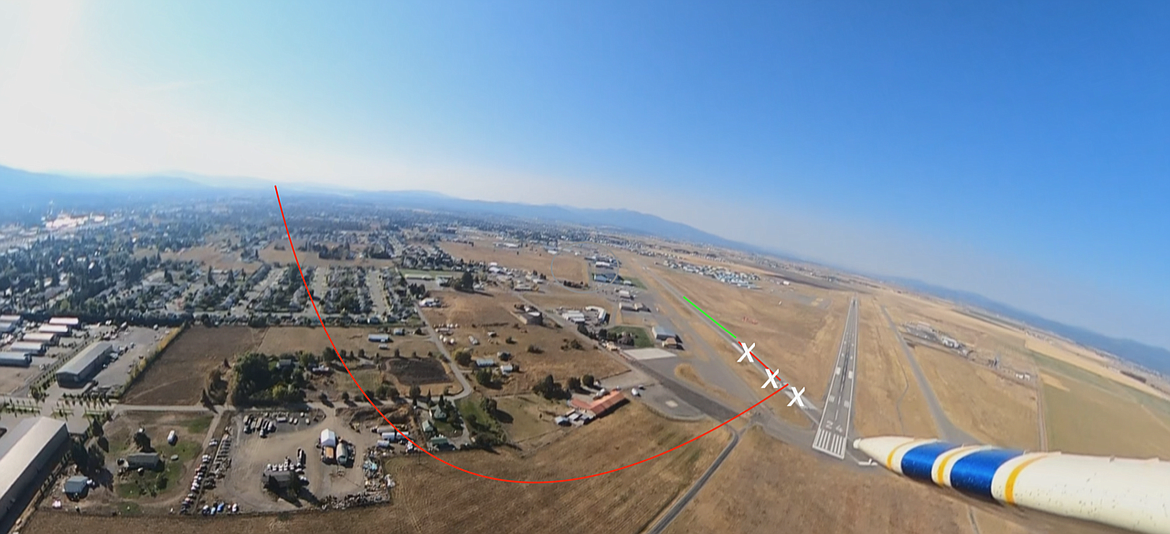Airport, critics far apart on policies
Plans to decouple the two runways at the Coeur d'Alene Airport/Pappy Boyington Field are sparking opposition by hangar owners for the safety of pilots, residents and their wallets.
A recent lawsuit filed by hangar owners Dr. John Huckabay, Murdo Cameron and Jim Walch has brought pilot concerns to light after the men felt unheard by county commissioners. In conjunction with the suit, the Coeur d'Alene Airport Association plans to meet Oct. 16 to address what they believe is the airport's misuse of taxpayer dollars.
In a CDAAA email, the association identified several projects, like decoupling the runways, that pose severe problems to hangar owners.
Steven Kjergaard, airport director, said the decoupling project is part of a 20-year master plan to bring the facility up to Federal Aviation Administration guidelines. Disconnecting the two runways, he said, has been a national FAA initiative since the Comair Flight 5191 crash in 2006 killed 41 people due to coupled lanes.
The airport started the project's design process in September, Kjergaard said, but plans won't be complete until early 2021. The project could be completed in 2023.
Members of the CDAAA and the lawsuit participants contend that this large-scale project is expensive, unnecessary, and unsafe. Hangar owner Mike Kincaid is not part of the litigation, but he is concerned for airplane safety and nearby properties.
Most airports install control towers that relay pilots' messages and mitigate possible collisions, but Kjergaard said the FAA dismissed a tower in Coeur d'Alene anytime soon.
"We've asked that question to the FAA, and their comment is as long as everyone follows FAA guidance, then everyone will be safe," Kjergaard said. "Typically, what we find is people are not following the correct procedures, and then others are, and it creates conflict, but the airport has no control over the planes in the sky."
Another concern is the increasing airplane noise around the surrounding area.
"If the airport is shortened, traffic will be in a tighter pattern over adjoining neighborhoods," Kincaid said. "That means a lot more airplane noise."
Hayden, Coeur d'Alene, and Rathdrum are all within the airport's area of impact, and the flight path of runway 6/24 extends out to the Washington-Idaho state line. Around the property is a spread of commercial and residential properties that already experience noise, Kjergaard said, and that isn't going to change.
Kincaid believes there are options other than removing a portion of the runway that the airport should have considered. One example he has is in Sonoma County, Calif., where a local airport installed signage and lights on the adjoining runways.
When developing the plan, Kjergaard and the airport's advisory board considered the Sonoma County plan and 21 others. Data from the Sonoma plan dates back to 2011 before the FAA increased restrictions, Kjergaard said, so implementing this design would no longer qualify.
"We looked at reorienting the runway to be true north-south, but we'd have to do that without FAA support," Kjergaard said. "We also looked at extending both runways, but the FAA told us we would have to have 500 operations per year that required that kind of length, and we had no justification."
Decreasing the runway's size, Kincaid pointed out, would also limit commercial jets' ability to land at the airport.
Currently, the plan calls for tearing up 1,000 feet of the 2/20 runway, which is roughly 5,400 feet. While this is drastically shorter than needed for larger commercial planes, the 6/24 runway that is 7,400 feet long is available for those flights.
"Most large aircraft use it, and the FAA considers it as our primary runway," Kjergaard said. "The whole thing everyone seems to forget is that the 2/20 runway is not designed to handle a lot of the traffic that uses it today."
Estimated costs for the project are around $5 million, Kjergaard said. About 90% of the decoupling is expected to be funded by FAA grants, leaving the remainder to the county and the state. Kjergaard expects $3.5 million to $4 million will come from FAA grants.
Since September, the CDAAA says more owners have come forward concerning the information they plan to address at their meeting next week. Kjergaard said the airport is trying to improve relations with property owners as the litigation continues.

